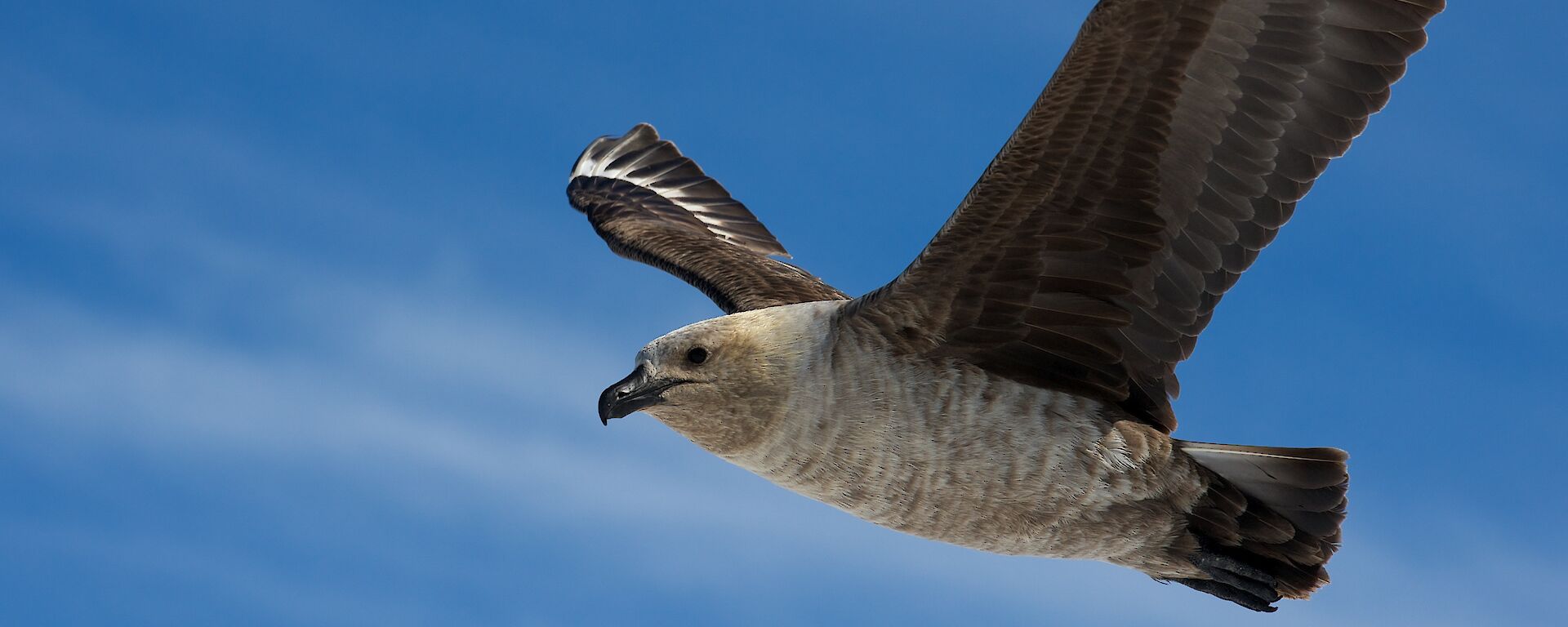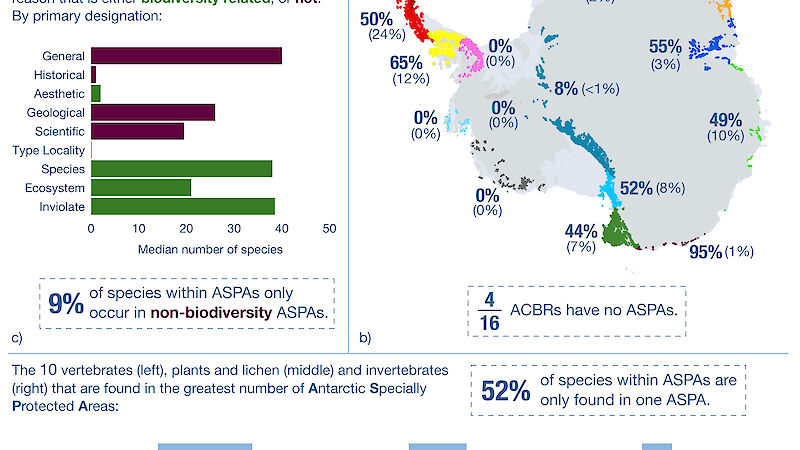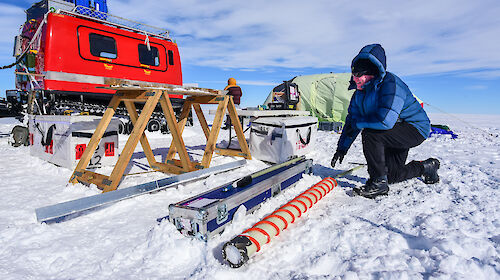A review of Antarctic Specially Protected Areas (ASPAs) has found they are biased towards protecting more charismatic species, such as penguins and seabirds, over less visible species such as plants, lichens and invertebrates.
The review by Australian Antarctic Division spatial ecologist, Dr Aleks Terauds, with Hannah Wauchope from Cambridge University and Dr Justine Shaw from the University of Queensland, was published in Nature Communications today.
It looked at more than 48 000 records, representing over 2000 species of plants, lichens, birds and invertebrates across Antarctica, and how well they are represented in ASPAs, within 16 defined ecological regions.
“We found that the protection of biodiversity within ASPAs is uneven across the 16 ecoregions,” Dr Terauds said.
“Four of the ecoregions didn’t contain any ASPAs, while overall, the number of Antarctic species represented in ecoregions with ASPAs varied between 8% and 95%.”
South polar skuas, Wilson’s storm-petrels and Adélie penguins were the most common species protected in ASPAs. An algae (Prasiola crispa), lichen (Usnea antarctica), springtail (Cryptopygus antarcticus) and mite (Stereotydeus villosus) were the best represented amongst the other biological groups.
“While this snapshot of biodiversity protection highlights a bias in current ASPAs of protecting easily detectable and charismatic species over less visible species, it provides a foundation for the systematic development of area protection via mechanisms provided for under the Antarctic Treaty system,” Dr Terauds said.
He said the uneven distribution of species across the continent, together with a lack of information in some areas, is likely to explain some of the differences within and between the different groups of organisms.
The biodiversity surveys that catalogued the 48 000 records of species are also unevenly distributed, with some ASPAs better surveyed than others and some organisms easier to survey than others.
In addition, some ASPAs are designated to protect other values, such as scientific, historic, aesthetic and wilderness values, rather than biodiversity — meaning that the actual protection for biodiversity within these areas might be limited.
“This study highlights the opportunity for proponents of ASPAs to consider managing for multiple objectives, ensuring appropriate management for the original designation, the associated biodiversity and any other values that are present,” Dr Terauds said.
“It can also inform discussions on further developing the Antarctic protected area system, including at a related international workshop before this year’s Antarctic Treaty Consultative Meeting.”
All of Antarctica is designated a natural reserve for peace and science under the Protocol on Environmental Protection to the Antarctic Treaty. ASPAs are a system of extra area protection provided for under Annex V of this Protocol. The protected status mitigates threats to an area through strict controls on human activities and a reduction in associated impacts. Some 44% of Antarctic species are found in ASPAs.
This work was supported by the Australian Antarctic Program and the Scientific Committee on Antarctic Research.




